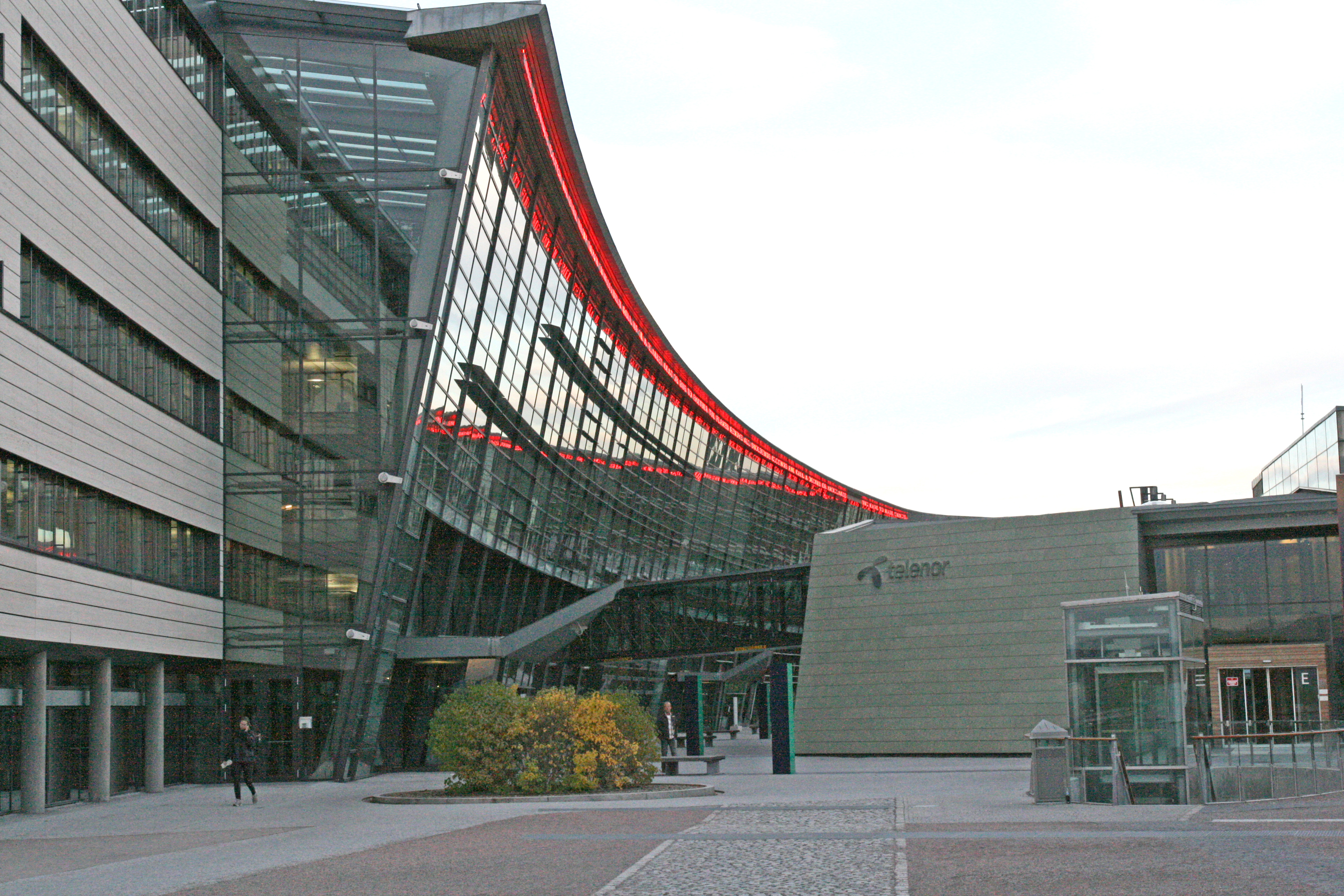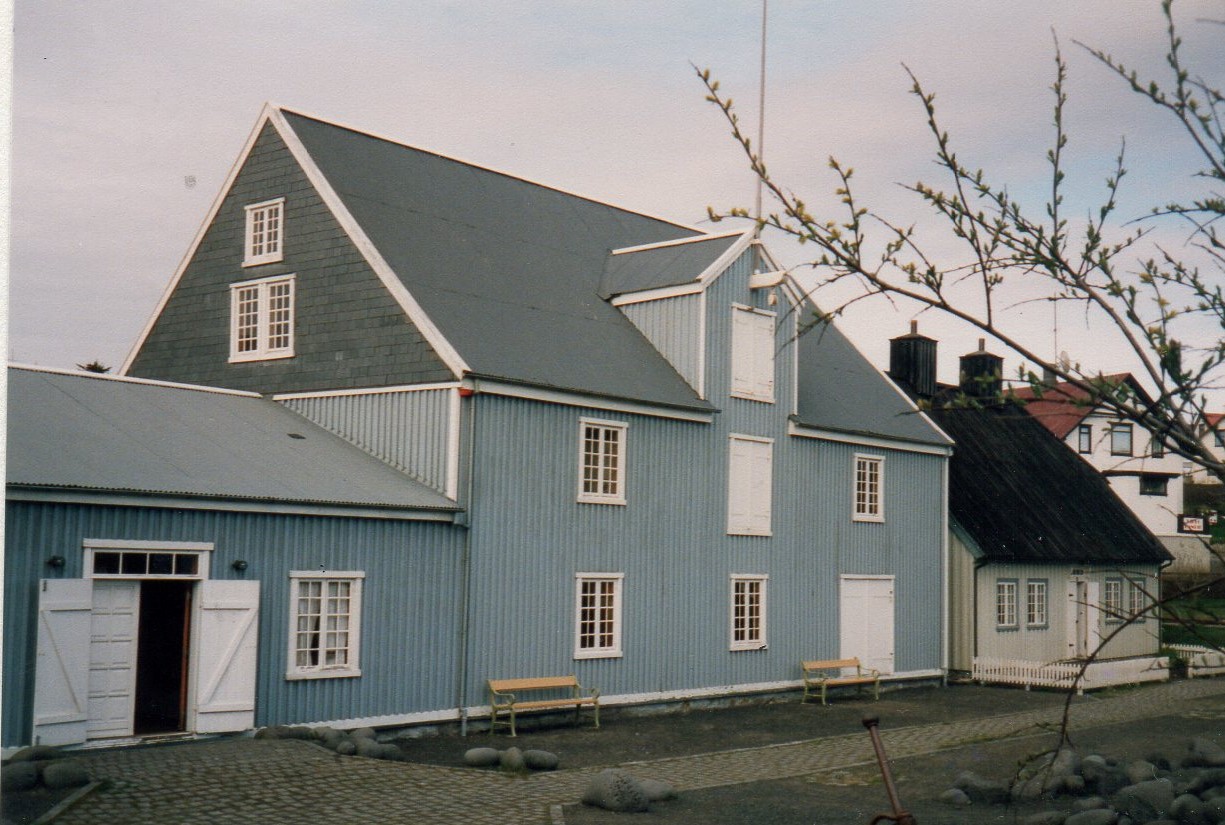|
Television In Iceland
Television in Iceland is currently composed of the public broadcasting service of RÚV, five free-to-view channels and a number of subscription channels provided by private broadcasters. Broadcasts began in 1955 when the American Forces Radio and Television Service (AFRTS) started an English-language television service broadcasting from Naval Air Station Keflavik, which operated until 2006. The first Icelandic-language television broadcasts started in September 1966 with the launch of RÚV, originally called Sjónvarpið ("The Television"). In 1986 the first privately owned TV station, Stöð 2 ("Channel 2"), began broadcasts. In recent years the emergence of foreign internet streaming services such as Netflix and Disney+ has seen shift from domestic providers provide similar on demand streaming services such as Síminn Premium and Stöð 2+. Channels can be received via digital terrestrial DVB-T/T2, digital satellite DVB-S and through IPTV providers such as Síminn and Vodafone. ... [...More Info...] [...Related Items...] OR: [Wikipedia] [Google] [Baidu] |
RÚV (TV Channel)
RÚV is the main television channel of RÚV, the Icelandic Public broadcasting, public broadcaster, launched in 1966. The free-to-air channel broadcasts primarily news, sports, entertainment, cultural programs, children's material, original Icelandic programming as well as United States, American, United Kingdom, British and Nordic countries, Nordic content. Among its highest-rated programs are the comedy sketch show ''Spaugstofan,'' mystery drama ''Trapped (Icelandic TV series), Ófærð (Trapped)'' and ''Fréttir (television program), Fréttir'' (''News''). It is the Icelandic Olympic Broadcasting Services, Olympic Broadcaster and has also usually holds rights to the FIFA World Cup and UEFA European Championship, UEFA Euro competitions. It is a member of the European Broadcasting Union and is responsible Söngvakeppnin, for selecting Iceland's entries to the Eurovision Song Contest. History The network made its first transmission on 30 September 1966 on channel. To begin wit ... [...More Info...] [...Related Items...] OR: [Wikipedia] [Google] [Baidu] |
Live Television
Live television is a television production broadcast in real-time, as events happen, in the present. In a secondary meaning, it may refer to streaming television over the Internet when content or programming is played continuously (not on demand). For example, the Pluto TV app has two categories for viewing: "Live TV" & "On Demand." On its website, Xfinity states "Watch TV series and top rated movies live and on demand with Xfinity Stream." In most cases live programming is not being recorded as it is shown on TV, but rather was not rehearsed or edited and is being shown only as it was recorded prior to being aired. Shows broadcast live include newscasts, morning shows, awards shows, sports programs, reality programs and, occasionally, episodes of scripted television series. Live television was more common until the late 1950s, when videotape technology was invented. Because of the prohibitive cost, adoption was slow, and some television shows remained live until the 1970s, ... [...More Info...] [...Related Items...] OR: [Wikipedia] [Google] [Baidu] |
Analog Television
Analog television is the original television technology that uses analog signals to transmit video and audio. In an analog television broadcast, the brightness, colors and sound are represented by amplitude, instantaneous phase and frequency, phase and frequency of an analog signal. Analog signals vary over a continuous range of possible values which means that Noise (electronics), electronic noise and interference may be introduced. Thus with analog, a moderately weak signal becomes Noise (video), snowy and subject to interference. In contrast, picture quality from a digital television (DTV) signal remains good until the signal level drops below digital cliff, a threshold where reception is no longer possible or becomes intermittent. Analog television may be wireless (terrestrial television and satellite television) or can be distributed over a cable network as cable television. All broadcast television systems used analog signals before the arrival of DTV. Motivated by the ... [...More Info...] [...Related Items...] OR: [Wikipedia] [Google] [Baidu] |
High-definition Television
High-definition television (HD or HDTV) describes a television system which provides a substantially higher image resolution than the previous generation of technologies. The term has been used since 1936; in more recent times, it refers to the generation following standard-definition television (SDTV), often abbreviated to HDTV or HD-TV. It is the current de facto standard video format used in most broadcasts: terrestrial broadcast television, cable television, satellite television and Blu-ray Discs. Formats HDTV may be transmitted in various formats: * 720p (1280 horizontal pixels × 720 lines): 921,600 pixels * 1080i (1920×1080) interlaced scan: 1,036,800 pixels (~1.04 MP). * 1080p (1920×1080) progressive scan: 2,073,600 pixels (~2.07 MP). ** Some countries also use a non-standard CEA resolution, such as 1440×1080i: 777,600 pixels (~0.78 MP) per field or 1,555,200 pixels (~1.56 MP) per frame When transmitted at two megapixels per frame, HDTV provides about five times ... [...More Info...] [...Related Items...] OR: [Wikipedia] [Google] [Baidu] |
Telenor
Telenor ASA ( or ) is a Norwegian majority state-owned multinational telecommunications company headquartered at Fornebu in Bærum, close to Oslo. It is one of the world's largest mobile telecommunications companies with operations worldwide, but focused in Scandinavia and Asia. It has extensive broadband and TV distribution operations in four Nordic countries, and a 10-year-old research and business line for machine-to-machine technology. Telenor owns networks in 8 countries.Global presence - Telenor website. Retrieved October 23, 2017. Telenor is listed on the Oslo Stock Exchange and had a market capitalization in November 2015 of [...More Info...] [...Related Items...] OR: [Wikipedia] [Google] [Baidu] |
Thor 5
Thor 5, also known as Thor 2R is a Norwegian communications satellite. It was successfully launched for Telenor atop an International Launch Services Proton-M/Briz-M carrier rocket, at 11:34 GMT on 11 February 2008. It is based on the STAR-2 satellite bus, and was constructed by Orbital Sciences Corporation. It carries 24 Ku band transponders, to provide direct-to-home television broadcasting. After launch, the Briz-M upper stage placed Thor 5 directly into a geosynchronous orbit A geosynchronous orbit (sometimes abbreviated GSO) is an Earth-centered orbit with an orbital period that matches Earth's rotation on its axis, 23 hours, 56 minutes, and 4 seconds (one sidereal day). The synchronization of rotation and orbital ..., eliminating the need for orbital raising manoeuvres and making the spacecraft able to save weight by carrying less fuel. It is positioned at a longitude of 1° West. References Communications satellites in geostationary orbit Spacecraft launched i ... [...More Info...] [...Related Items...] OR: [Wikipedia] [Google] [Baidu] |
Direct To Home
Satellite television is a service that delivers television programming to viewers by relaying it from a communications satellite orbiting the Earth directly to the viewer's location. The signals are received via an outdoor parabolic antenna commonly referred to as a satellite dish and a low-noise block downconverter. A satellite receiver then decodes the desired television program for viewing on a television set. Receivers can be external set-top boxes, or a built-in television tuner. Satellite television provides a wide range of channels and services. It is usually the only television available in many remote geographic areas without terrestrial television or cable television service. Modern systems signals are relayed from a communications satellite on the X band (8–12 GHz) or Ku band (12–18 GHz) frequencies requiring only a small dish less than a meter in diameter. The first satellite TV systems were an obsolete type now known as television receive-only. Th ... [...More Info...] [...Related Items...] OR: [Wikipedia] [Google] [Baidu] |
Vodafone Iceland
Vodafone Iceland is an Icelandic telecommunications company owned by Sýn. Although the company carries the Vodafone brand and trademark, Vodafone Group owns no interest in the company, but rather franchises the brand and associated advertising styles. Vodafone Iceland offers mobile ( 2G/ 3G/ 4G), fixed-line services as well as ADSL, VDSL and fiber Internet services to individuals and companies. It also provides a managed multicast IPTV and pay television services over digital terrestrial television, DVB-T2. Its telecommunications branch is a franchise of the Vodafone network, formerly known as Og Vodafone and from 5 October 2006 as Vodafone Iceland. Vodafone Iceland is the first partner network to hold the Vodafone brand. The company is registered in Iceland under the name Fjarskipti hf. Vodafone Iceland previously ran Digital Iceland, the MMDS broadcasting system for 365 corporation, from the 22 November 2006, until it was closed in 2017. In 2014, the Icelandic public broa ... [...More Info...] [...Related Items...] OR: [Wikipedia] [Google] [Baidu] |
Húsavík
Húsavík () is a town in Norðurþing municipality on the north coast of Iceland on the shores of Skjálfandi bay with 2,307 inhabitants. The most famous landmark of the town is the wooden church Húsavíkurkirkja, built in 1907. Húsavík is served by Húsavík Airport. Overview Income is derived from tourism and fishing, as well as retail and small industry. Until recently, Húsavík was the export harbour for silica that was extracted from nearby lake Mývatn. According to the ''Landnámabók'' ("Book of Settlement"), Húsavík was the first place in Iceland to be settled by a Norseman. The Swedish Viking Garðar Svavarsson stayed there for one winter around 870 A.D. When he left the island in spring of 870, after a winter's stay, he left behind a man named Náttfari and two slaves, a man and a woman, and they established a farm here. The name of the town means "bay of houses", probably referring to Garðar's homestead, which may have been the only houses then in Iceland. ... [...More Info...] [...Related Items...] OR: [Wikipedia] [Google] [Baidu] |
Hella, Iceland
Hella () is a small town in southern Iceland on the shores of the river Ytri-Rangá and has, as of 2021, 942 inhabitants. Hella is situated to the east of Reykjavík on the Hringvegur (Route 1) between Selfoss and Hvolsvöllur. Overview The name of the town comes from caves near the river. It is said that Irish monks lived there in the times of first settlement. There are small industries as well as shops. As in other regions of the country, tourism is a growing sector. The volcano Hekla is nearby so it is possible to go hiking there as well as to make excursions to other locations popular with tourists such as Landmannalaugar or Þórsmörk. The founding of Hella started in 1927 when Þorsteinn Björnsson built a store over by the bridge Ytri-Rangá in the land of Gaddstaðaflatir. That founder of Hella was built a memorial at the celebration of Hella's 50 years since the founding of it at 1977. See also * List of cities in Iceland * Rangárþing ytra *Hekla Hekla (), ... [...More Info...] [...Related Items...] OR: [Wikipedia] [Google] [Baidu] |
Hafnarfjörður
Hafnarfjörður (), officially Hafnarfjarðarkaupstaður (), is a port town and municipality in Iceland, located about south of Reykjavík. The municipality consists of two non-contiguous areas in the Capital Region, on the southwest coast of the country. At about 30,000 inhabitants, Hafnarfjörður is the third-most populous city in Iceland after Reykjavík and Kópavogur. It has established local industry and a variety of urban activities, with annual festival events. Activities The town is the site of an annual Viking festival, where Viking culture enthusiasts from around the world display reconstructions of Viking garb, handicraft, sword-fighting and longbow shooting. It takes place in June each summer. Local industry Just two kilometres () outside of Hafnarfjörður is an aluminium smelter, run by Alcan. The smelter was originally built in 1969, and it has improved its cleaning process since then, especially regarding fluoride. Local elections were held in May 2006, where ... [...More Info...] [...Related Items...] OR: [Wikipedia] [Google] [Baidu] |




